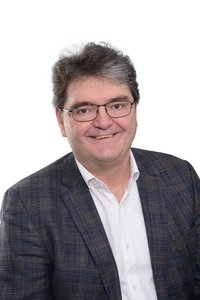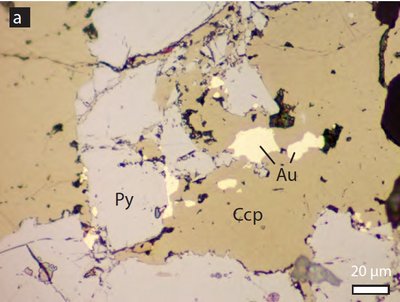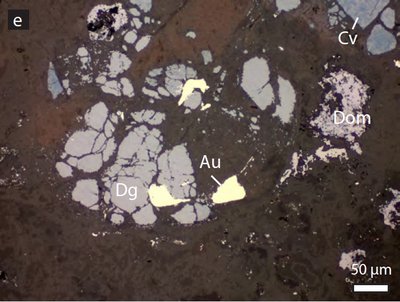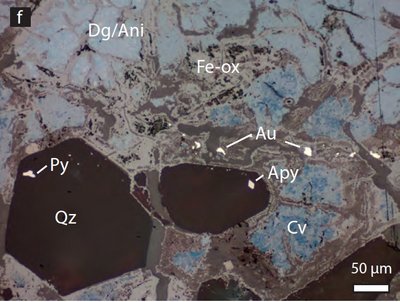Orogenic-type copper-gold-arsenic-(bismuth) mineralization at Flatschach, Styria

Structurally controlled Cu-Au mineralization was exploited in the historic Flatschach mining district (Styria, Austria). It occurs in a steep NE–SW to NNE–WSW oriented vein system of calcite-(dolomite)-quartz veins in amphibolite facies metamorphic rocks (banded biotite gneiss/amphibolite, orthogneiss, metagranitoid) of the poly-metamorphosed Austroalpine Silvretta-Seckau nappe. Vein formation postdated ductile deformation events and Eoalpine (Late Cretaceous) peak metamorphism but predated deposition of coal-bearing Early to Middle Miocene sediments in the Fohnsdorf pull-apart basin.
Three gold-bearing ore stages can be distinguished: The Stage 1 primary hydrothermal (mesothermal?) ore assemblage is dominated by chalcopyrite, pyrite and arsenopyrite. Associated minor minerals include alloclasite, enargite, bornite, sphalerite, galena, bismuth and matildite. Gold occurs as inclusions, along re-healed micro-fractures or along grain boundaries of the sulfides. Sericite-carbonate alteration is developed around the veins. Stage 2 ore minerals formed by the replacement of Stage 1 sulfides and include digenite, anilite, “blue-remaining covellite” (spionkopite, yarrowite), bismuth, and the rare copper arsenides domeykite and koutekite. Gold in Stage 2 is primarily associated with carbonate (calcite, Fe-dolomite) gangue and less commonly with digenite, domeykite/ koutekite and bismuth. Stage 3 is a strongly oxidized association that includes hematite, cuprite, and various other secondary Cu- and Fe-hydroxides and -carbonates. It formed during supergene weathering. Stage 1 and 2 gold consists mostly of electrum (gold fineness 640–860), and rare near pure gold (fineness 930–940). Gold in stage 3 is Ag-rich electrum (fineness 350–490, and has a high Hg content (up to 11 mass %).
The Cu-Au deposits in the Flatschach area show similarities with meso- to epizonal orogenic lode gold deposits regarding the geological setting, the structural control of mineralization, the type of alteration, the early sulfide assemblage and the composition of gold. Unique about the Flatschach district is the lower-temperature overprint of copper arsenides (domeykite and koutekite) and copper sulfides (djurleite, yarrowite/spionkopite) on earlier formed sulfide mineralization. Based on mineralogical considerations temperature of Stage 2 was between about 70 °C and 160 °C. Gold was locally mobilized during this low-temperature hydrothermal overprint as well as during Stage 3 supergene oxidation and cementation processes.



